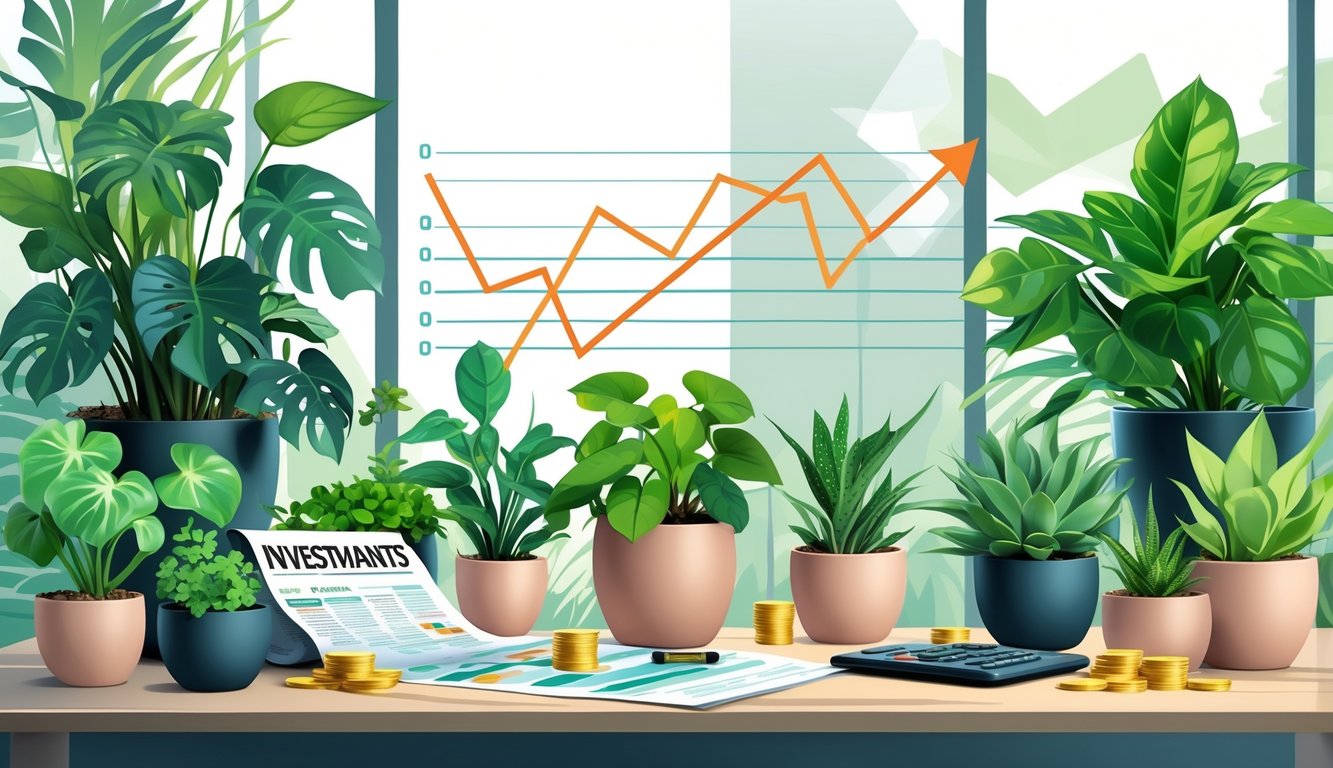
Selling and Monetizing Rare Houseplants
Look, I’m not about to spin some rags-to-riches jungle tale. I’ve watched the plant world flip-flop so hard it’s almost funny—last month, a single Anthurium cutting sold for more than my rent, and a week later? Couldn’t even give one away. I swear, figuring out when to list, what to charge, and dodging lowballers—ugh, it’s like a never-ending flea market with WiFi.
Choosing the Right Marketplace
I can’t even count how many hours I’ve lost scrolling through Facebook plant groups, dodging DMs about “trades only” or “ISO” unicorns. Seriously, why are claim sales always at 1 a.m. or some random Wednesday? Half the time, people vanish after typing “dibs.” Plant expos? Eh, sometimes I blow more on table fees and snacks than I make, and don’t get me started on bubble wrap.
If your photos look like you took them through a dirty fish tank, just forget it. People will pay $200 for a Monstera albo if the roots look crisp and someone with a big following says it’s legit. Steve’s Leaves can’t keep anything in stock when hype hits, so yeah, the “where” is almost as wild as the “what” or “who.” Just always have your shipping stuff ready, or you’ll miss out—ask me how I know.
Pricing Strategies for Maximum Profit
Why does someone offer me $60 for my variegated Philodendron when it sold for $180 last week? I stare at these numbers, get mad at the universe, then doomscroll Etsy and auction sites for comps. Price isn’t about “value”—it’s about whether TikTok’s obsessed with a leaf pattern this week, or if someone in Australia wants what’s common here. I once sold a boring Hoya for a ridiculous price just because of import laws. Felt weirdly criminal.
Don’t get fancy—start low, let people fight it out, unless your plant’s suddenly viral. Bulk deals? Sometimes they clear out your shelf, sometimes no one cares. I just try to keep up. Price trends change every time I blink. If you’re not stalking collector sites, you’ll miss the next price jump (or crash).
Navigating Risks and Challenges
Nobody brags, “I bought a rare Anthurium, better call my financial planner.” Never. The headaches sneak up—random price drops, leaves melting, weird rules that popped up last week. Honestly, I’d rather lose my AirPods than watch a Monstera get demolished by spider mites.
Market Fluctuations
One month, Philodendron Spiritus Sancti is the holy grail; next, it’s half price because someone dumped a bunch online. Garden centers say houseplant inventory shot up 318%—doesn’t mean your rare stuff stays valuable. Check the market chaos. Auctions set prices that make zero sense, then the same plant tanks on another site. The Rare Leaf in Australia? Sometimes they’re sold out, sometimes they’re overflowing, and I’m convinced nobody’s steering the ship.
Disease and Pest Management
I bought a “mint” Monstera adansonii, quarantined it (or so I thought), and bam—spider mites everywhere. If you think rare plants don’t get bugs, you’re in for a rude awakening. Neem oil sometimes helps, sometimes doesn’t. Even pro growers admit pests just happen—no magic fix.
Worst part? Some diseases hide for months, then blow up when you least expect it, and you’re stuck. Mycorrhizal mixes? Sometimes they help, sometimes they’re just expensive dirt. I keep alcohol wipes on hand for my tools—my skin hates me for it.
Legal and Regulatory Considerations
Try importing a wild Anthurium warocqueanum with no paperwork—just don’t. CITES, import bans, city rules about cycads… it’s a minefield. Customs once grabbed my friend’s whole shipment—labels, permits, everything, gone. No refunds. Why would they care?
I keep a spreadsheet of legal stuff and bookmark every government form I can find. Asking a seller if a genus is legal feels dumb, but not as dumb as getting a letter from the USDA. If they ever regulate leaf holes, I’m out.
By the way, plant insurance? Basically a joke. Nobody covers your $2,500 Rhaphidophora tetrasperma variegata. If it rots, that’s on you.
Role of Influencers and Online Communities
Plant prices go nuts overnight, TikTok’s full of houseplant videos, and suddenly the market feels like a sketchy stock exchange run by people with ring lights. It’s not just rare Monsteras—my inbox is a mess of auction screenshots and frantic shipping questions.
How Plant Influencers Shape Trends
Last night, I scrolled Instagram until my thumb went numb. Three plantfluencers raved about variegated Monsteras between ads for soil meters. One post and eBay prices triple overnight. Nobody agrees on who’s “credible,” but everyone copies whoever’s got the most reels of pothos transformations.
Some of these influencers only spill sourcing secrets to Patreon backers. Hashtag games, flash auctions, root propagation videos—sometimes I wonder if I’m collecting plants or playing the penny stocks. Forbes says plantfluencers get higher engagement than lifestyle folks—maybe, but I still can’t buy a real Spiritus Sancti. FOMO’s real, and I’ve definitely bid on sketchy “rare” stuff because of it. Here’s more on that influencer mess, but honestly, half my wishlist is still out of reach.
Leveraging Online Platforms for Education
Reddit’s /r/RareHouseplants at 1 a.m. is a fever dream—pest drama, mislabeled seedlings, “investment grade” aroid lists, and the answer you need is always buried. Facebook groups? Endless humidity arguments (is 61% too much?) and at least one livestreamed propagation miracle every day.
Where else do you get step-by-step guides from random plant nerds, not brands? TikTok’s got fifteen-second hacks (“stick the node in moss, trust me”) and suddenly everyone’s buying coco coir and grow lights, so prices spike. Every time a big collector posts a rare plant, Google searches double. Modern Farmer says rare plant sales still rise even after everyone ditches their Peloton.
It’s chaos—panic over “out-of-stock” epipremnums, flash sales, comment wars. But if you can deal with the memes and drama, you’ll pick up real tips, like using perlite to save Hoyas from root rot. Is it education or just a crowd panic? Still no clue on bottom watering.